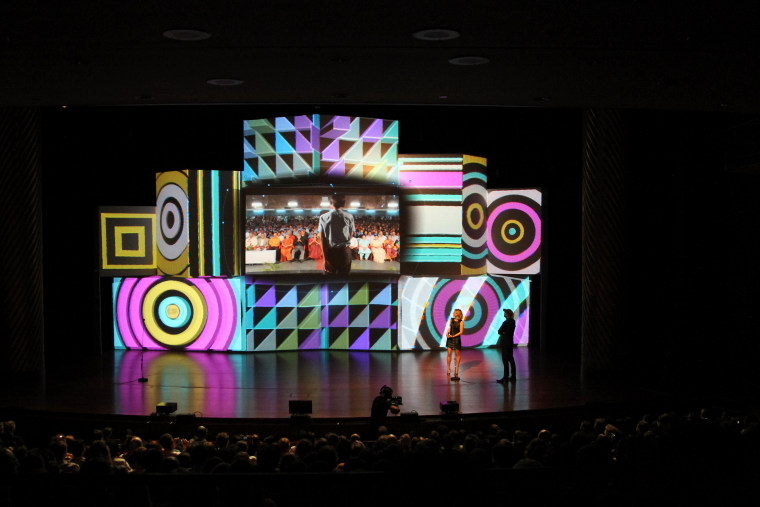Vimeo is holding its annual festival in New York City this week. As part of the event, the video-sharing service held an awards show on Thursday, honoring creative types and the videos they've produced. Since the awards show was designed by geeks — and for geeks — there's naturally plenty of tech hiding in every corner.
Evan Grant of Seeper — a London-based arts and technology collective that is that "brains" behind the technology of the awards show — took some time to explain exactly what it took to run what he describes as the "world's first real time, responsive, projection mapped awards show."
Unlike many conventional awards shows, Grant says, Vimeo's has a stage consisting of a three-dimensional sculpture which seemingly comes to life. That's because there are high-resolution 3-D graphics which are projected from both the front and the rear of the set.
These 3-D graphics are often responding to whoever is on stage — thanks to a motion tracking system similar to the one found in the Kinect connected to your Xbox — and thereby offering these individuals control of the entire set.
This setup means that there has to be a system capable of tracking and processing graphics, video, sound, light, and human interaction all at the same time. And that takes quite a bit of gear.
Grant tells me that it took the equivalent of 64 consumer PCs, 30 video projectors and 64 graphics cards to keep things running. This is, of course, all after over 5,000 hours of production time, which produced the 50,000 or so lines of code making up the digital performance system underneath it all as well as about 45,000 frames of hand-rendered 3-D motion graphics.
The end result was mesmerizing though. The show consists of about 180,00 frames total, with approximately six million pixels being projected during every frame.
Yes, that means that over one trillion pixels were shown during the awards show. And that alone sounds impressive.
Want more tech news, silly puns, or amusing links? You'll get plenty of all three if you keep up with Rosa Golijan, the writer of this post, by following her on Twitter, subscribing to her Facebook posts, or circling her on Google+.
